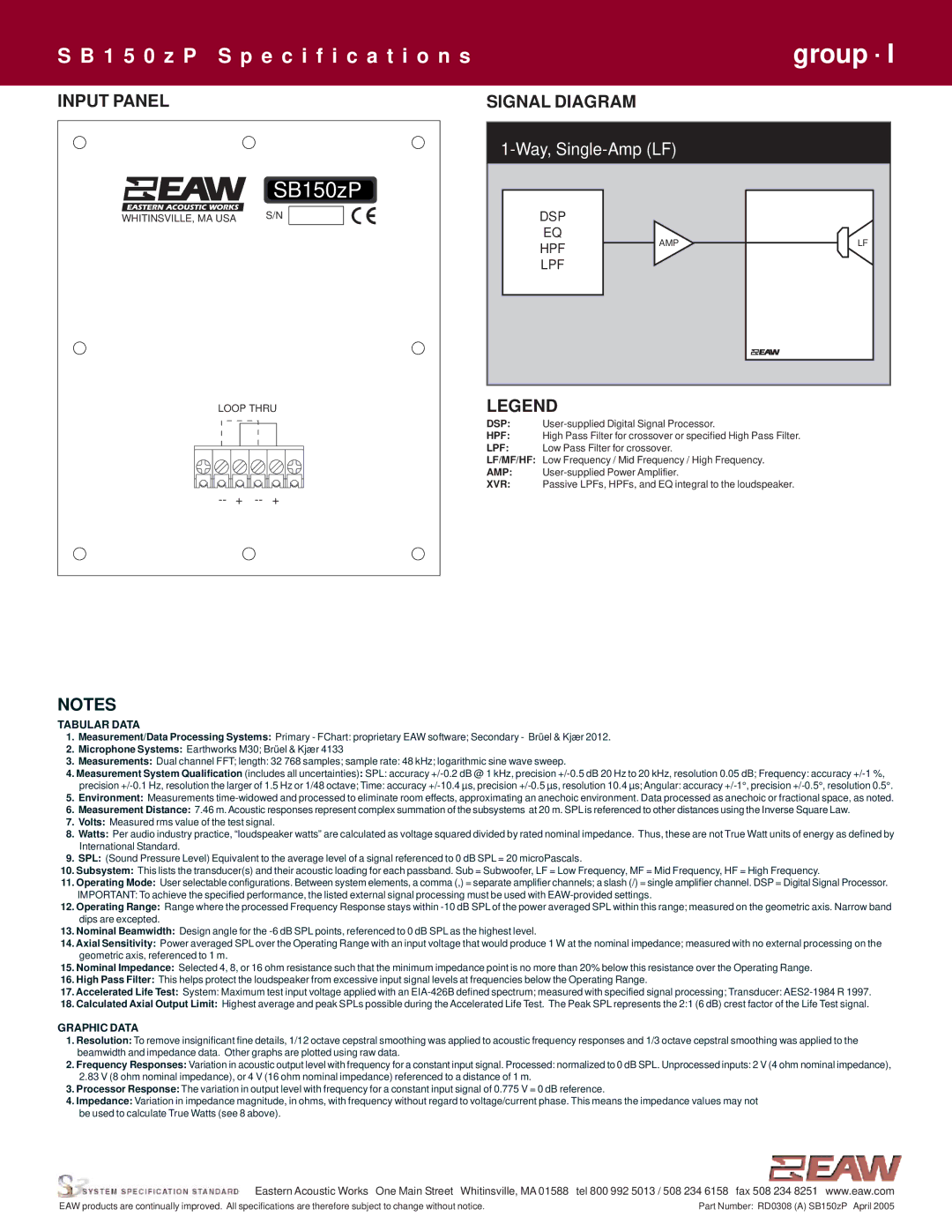SB150zP specifications
The EAW SB150zP is a cutting-edge subwoofer designed for professional audio applications, marrying innovative technology with robust construction to deliver exceptional sound performance. This powerful subwoofer is renowned for its ability to produce deep, impactful bass with clarity and precision, making it ideal for live sound reinforcement, installations, and mobile sound applications.One of the standout features of the SB150zP is its high-efficiency 15-inch low-frequency driver. This driver is engineered to provide maximum output while minimizing distortion, allowing for a fuller sound at higher volumes. The design of the driver, coupled with an advanced enclosure, ensures that bass frequencies are delivered with punch and authority, catering to genres that demand extensive low-end support, such as electronic, rock, and hip-hop.
The enclosure of the SB150zP is meticulously constructed from durable plywood, providing both strength and resonance control. Its ported design enhances low-frequency extension while maintaining a compact footprint. This allows the subwoofer to fit seamlessly into various environments, whether on stage or in a permanent installation. The rugged finish withstands the rigors of touring and repeated transport, ensuring longevity and reliability in diverse settings.
In terms of connectivity, the SB150zP is equipped with both XLR and ¼-inch inputs, making it compatible with a wide range of audio equipment. This versatility means it can easily integrate into any sound system, supporting both professional audio engineers and casual users. Additionally, the subwoofer features an adjustable crossover frequency, allowing users to tailor the sound to match different speakers and acoustic environments.
The SB150zP also incorporates advanced thermal management technology, which prevents overheating during extended use. This ensures consistent performance, even at high output levels, and extends the life of the components.
In summary, the EAW SB150zP subwoofer is an impressive combination of performance, durability, and versatility. Its robust design, powerful driver, and user-friendly features make it a valuable asset for any sound system, offering an unparalleled low-frequency response that meets the demands of various audio applications. Whether for touring professionals or fixed installations, the SB150zP is poised to deliver exceptional sound quality and reliability.

